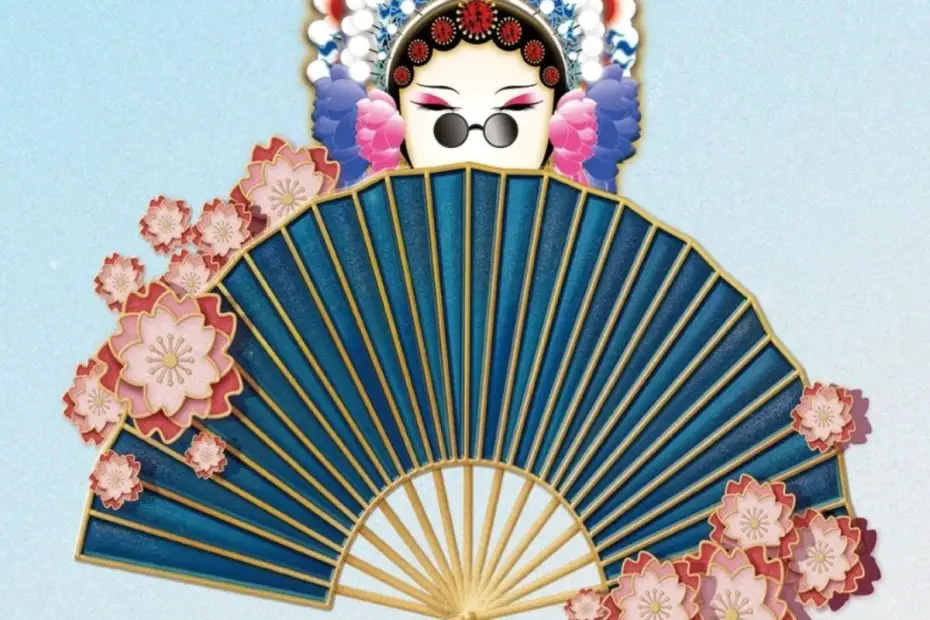Did you know that bamboo hand fans were not only used for cooling down in ancient China but also as a symbol of status and wealth, with the wealthiest citizens owning the most intricately designed and crafted fans?
What is the other use of a bamboo fan?
A bamboo hand fan is a handheld device.
The fan blades are typically made of bamboo, a naturally cool and lightweight material that is easy to hold.
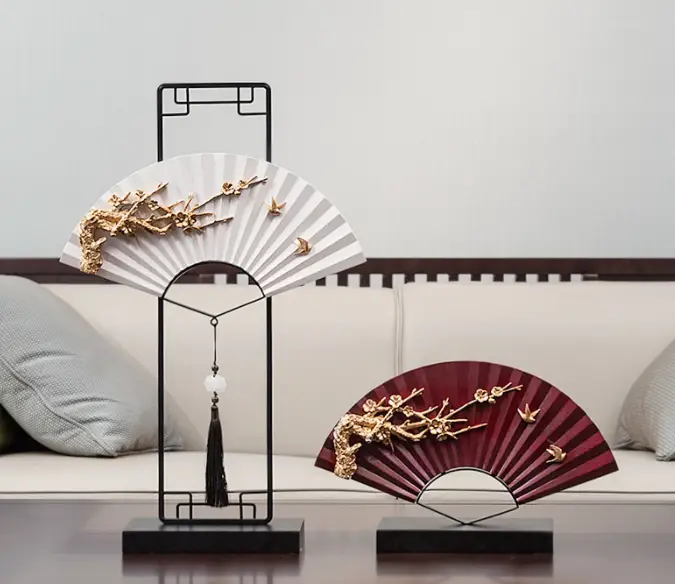
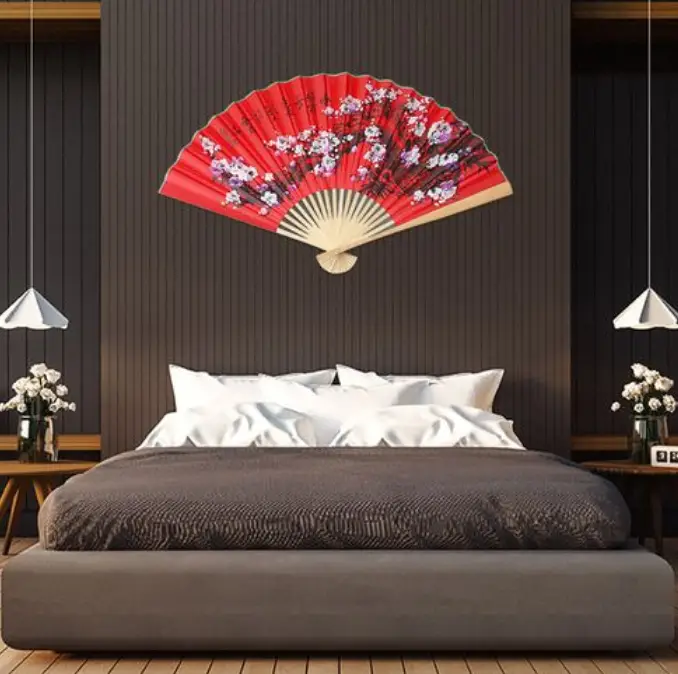
- The hand fan can also be used for decoration and as a stylish accessory. (What are the most popular fans to buy for wall decor? Top picks)
- They were also used for ceremonial and ritual purposes and as a sartorial accessory when wearing hanfu in Han Dynasty.
Brief History of bamboo fan:
The Chinese bamboo hand fan has a long and rich history dating back to ancient times.
1️⃣ Its use was first recorded in China during the Han dynasty (206 BCE to 220 CE). Bamboo, being a widely available and durable material, was used to create the fan blades.
2️⃣ Over time, the Chinese bamboo hand fan also became a popular accessory in the courtly culture, with many fans being intricately decorated with beautiful paintings and calligraphy. It was also used in traditional Chinese dance and theater as a prop and as part of the performance.
3️⃣ During the Ming Dynasty (1368–1644) and the Qing Dynasty (1644–1912) fan making reached a new level of artistry and they become increasingly popular among the general population.
4️⃣ The traditional Chinese bamboo hand fan still continues to be made and used today.
What does the painting on a hand fan symbolize?
Landscapes: Landscapes are often depicted on Chinese hand fans, and are associated with the idea of a “gentleman’s retreat.”
They are seen as symbols of natural beauty and the fleeting nature of life.
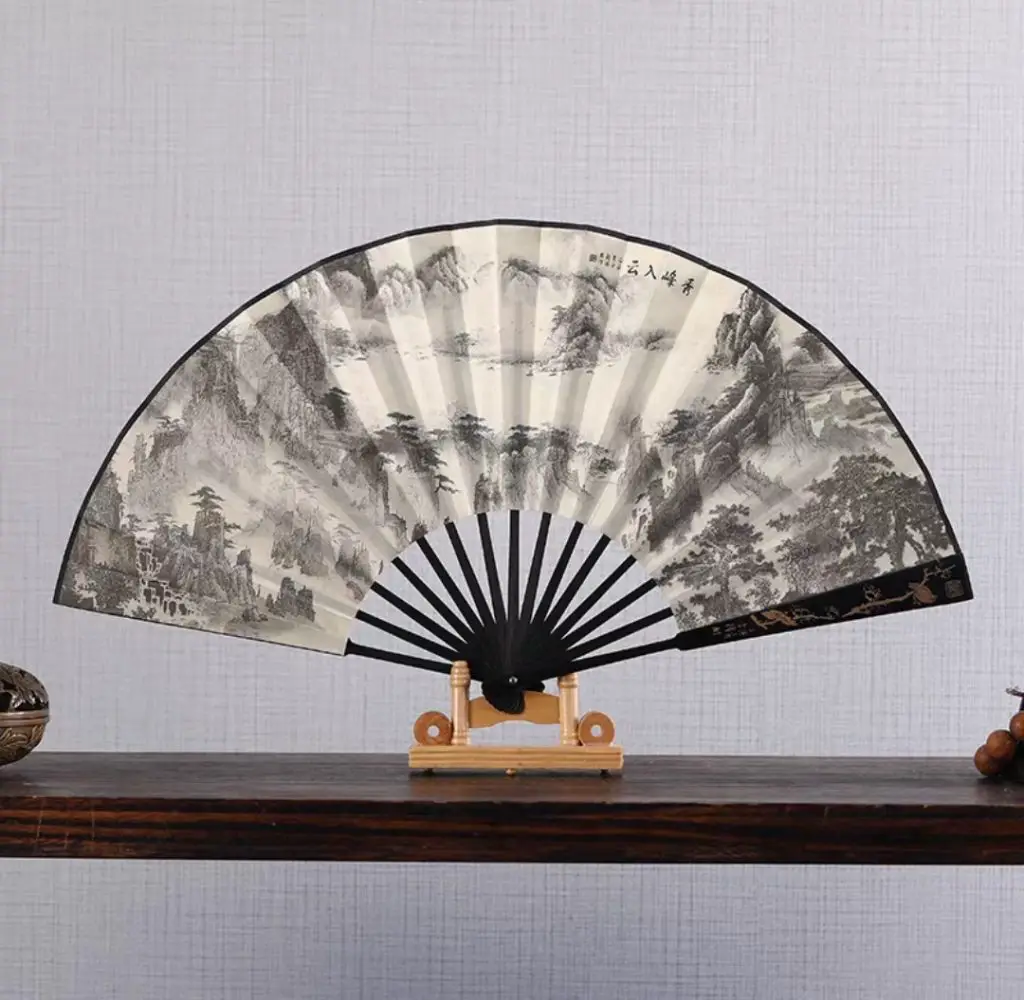
Figures: such as poets and scholars, are often depicted on Chinese hand fans.
They symbolize the virtues of education, culture, and refinement.
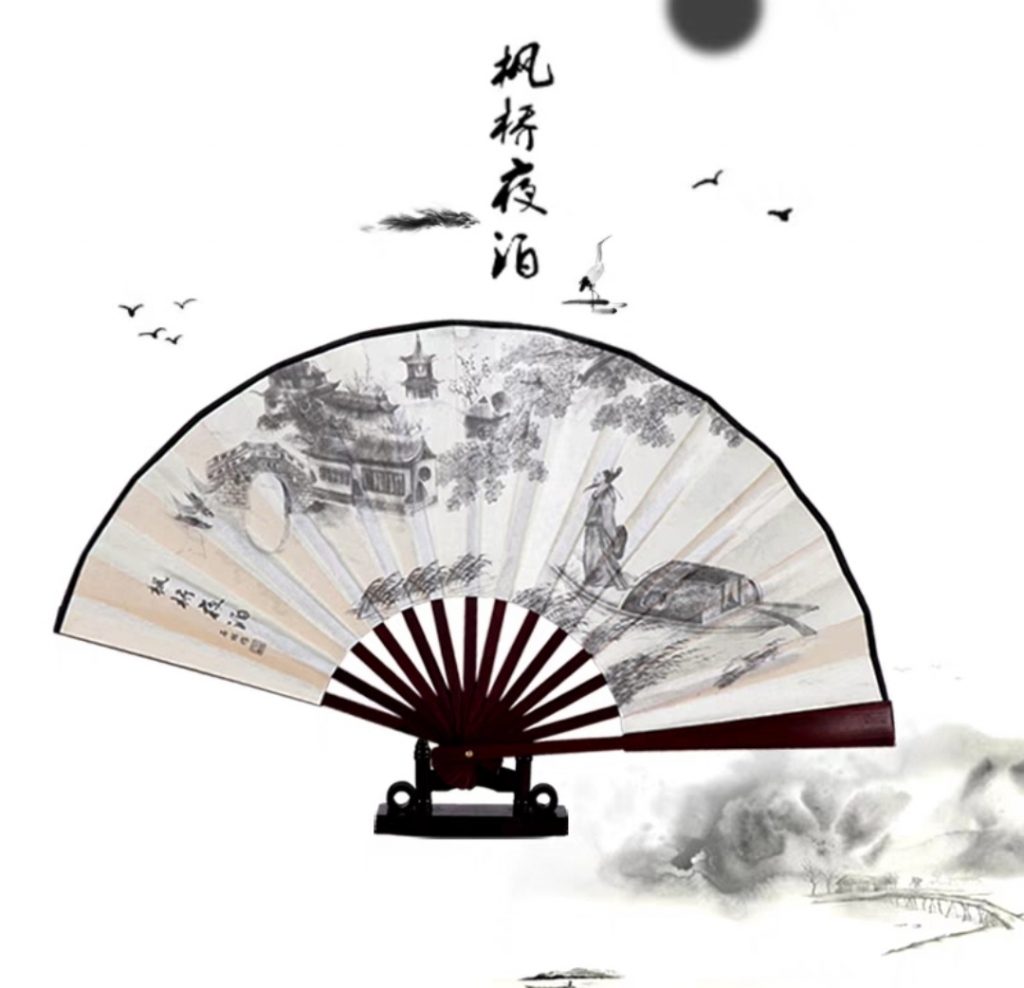
Flowers and Birds: Flowers and birds are common subjects on Chinese hand fans.
Flowers are seen as symbols of beauty, while birds are symbols of freedom and the fleeting nature of life.
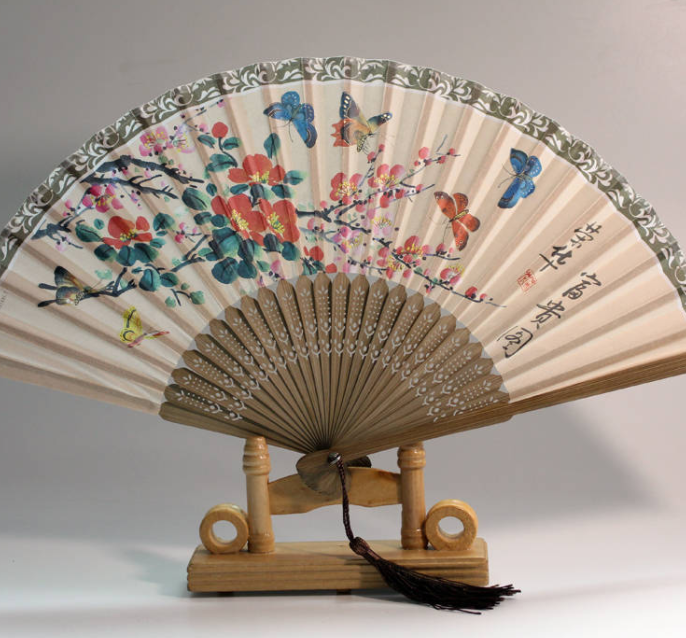
Animals: Animals, such as lions and dragons, are often depicted on Chinese hand fans.
They symbolize strength, power, and good luck.
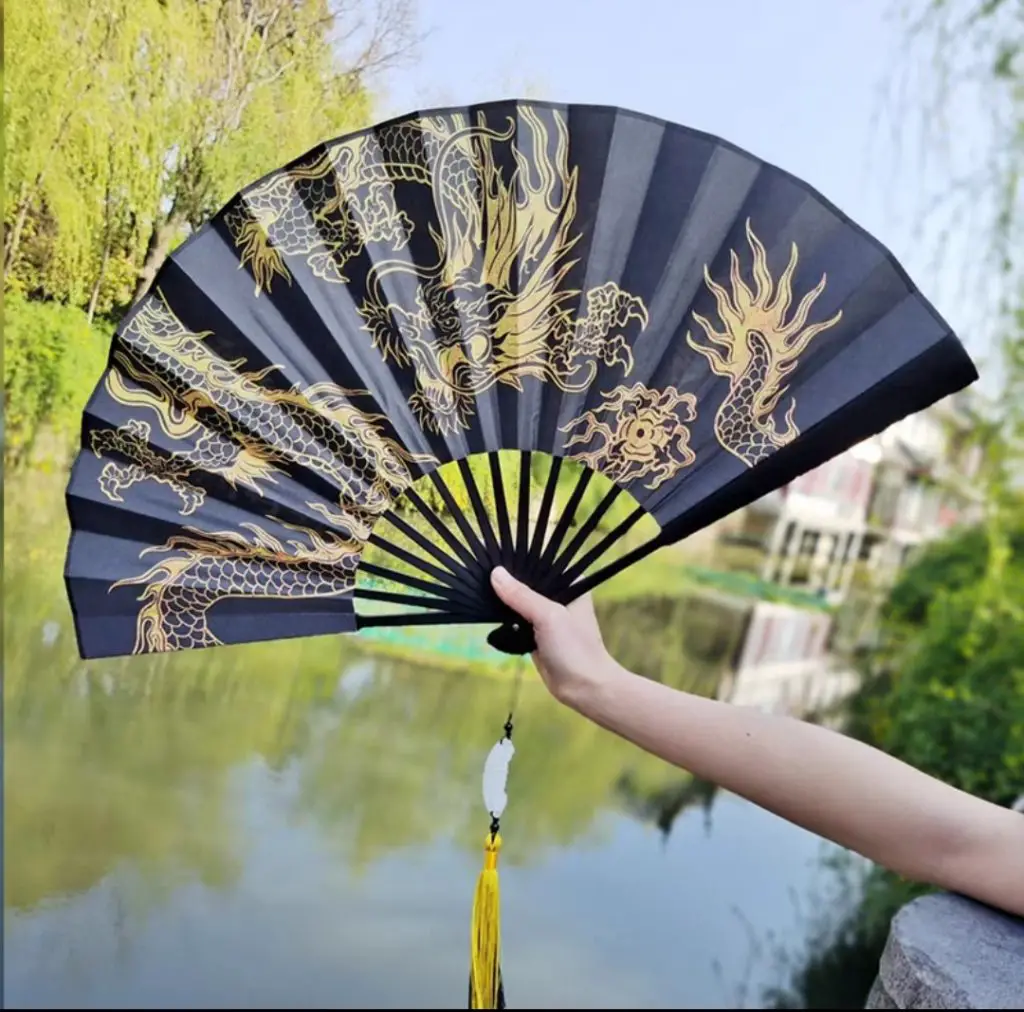
Inscriptions and Calligraphy: Inscriptions and calligraphy are often used to add an extra layer of meaning to the designs on Chinese hand fans.
They can convey messages or express the feelings of the person who created the fan.
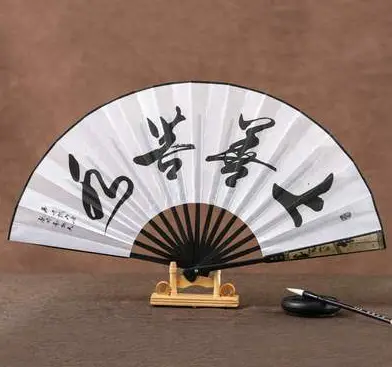
“上善若水” (shàng shàn ruò shuǐ) is a Chinese idiomatic phrase, which in English can be translated as “The best of people is like water.”
The meaning behind this phrase is that water is essential for life, it’s humble, and adaptable, it finds its way in the lowest and most difficult places.
Similarly, the best kind of person is one who is like water – humble, adaptable, and able to adapt to different circumstances.
Natural elements such as rocks and water, often used to create a serene and peaceful atmosphere.
What are the different types of hand fans in China?
- Rigid Hand Fans 团扇: also known as “Round Fans” that are held open, usually made from bamboo or wood, these fans are mostly used for decoration or as a performance prop.
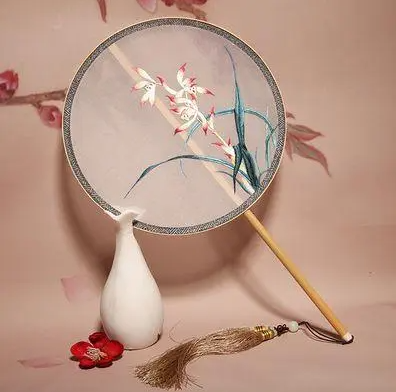
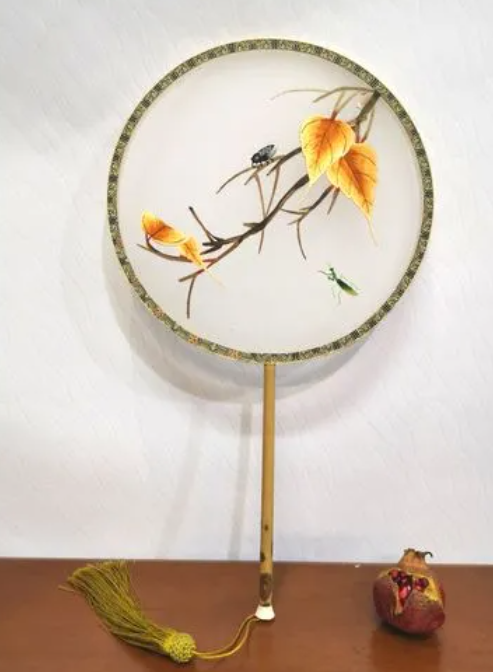
- Folding Hand Fans 折扇: also known as “Bamboo Folding Fans” or “Silk Folding Fans” that can be folded and carried around, the coverings are usually made from silk, paper or other materials.
(Here are the top picks of the best folding hand fans for the style and function.)
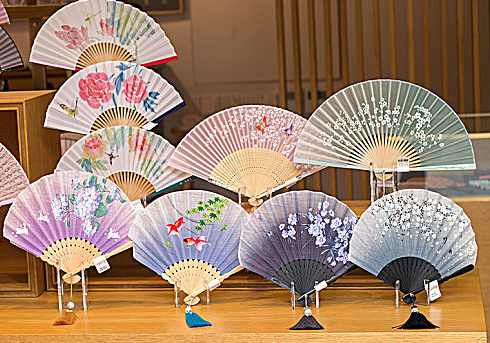
- Feather Hand Fans 羽毛扇: usually made from peacock or ostrich feathers and used for ceremonial purposes or as part of traditional dances.

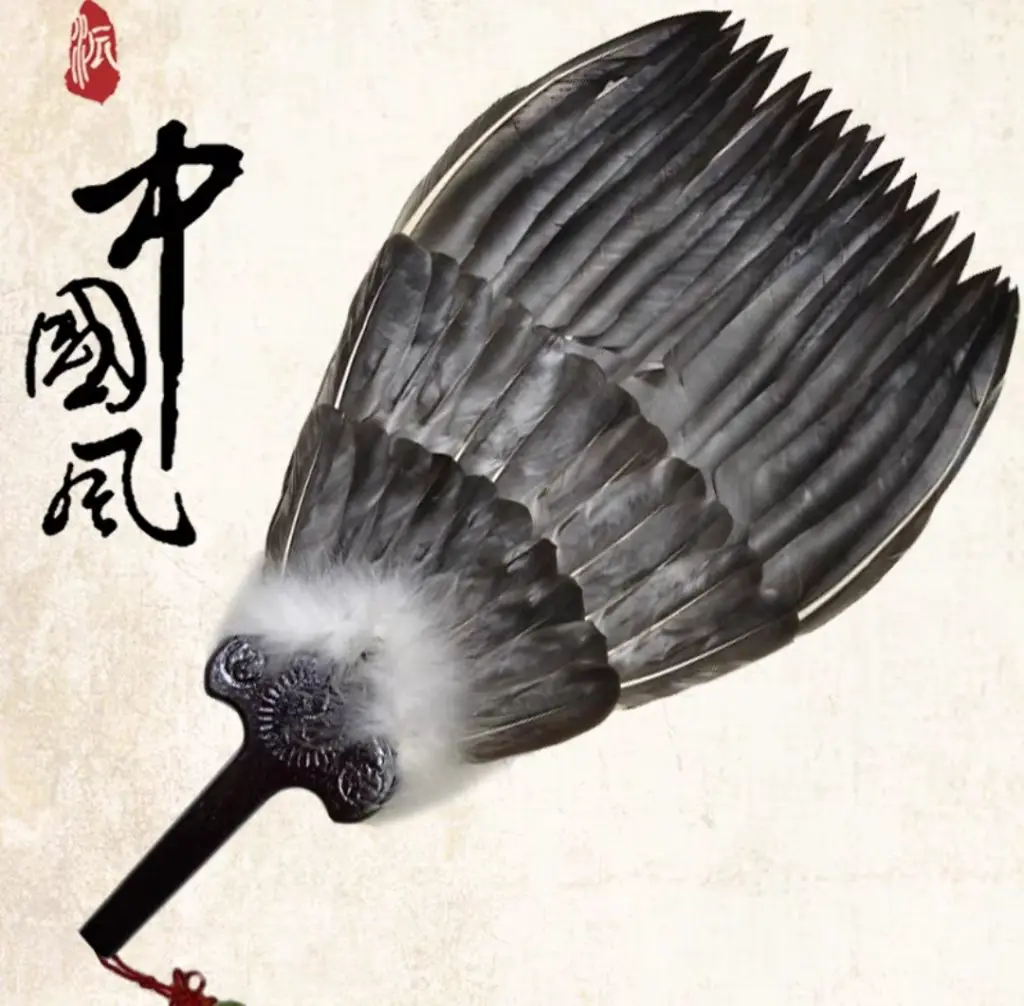
In ancient China, feather fans were typically used by members of the imperial court, as well as by wealthy and high-ranking members of society.
These fans were considered to be a luxury item, and were often made from the feathers of birds such as peacocks or cranes.
- Bulrush fan 蒲扇 is a traditional Chinese hand fan made of natural materials such as bulrush or sedge leaves. These fans are known for their lightweight, breathable and durable qualities, as well as their natural beauty and simplicity. They have been used in China for thousands of years as a practical tool for keeping cool.
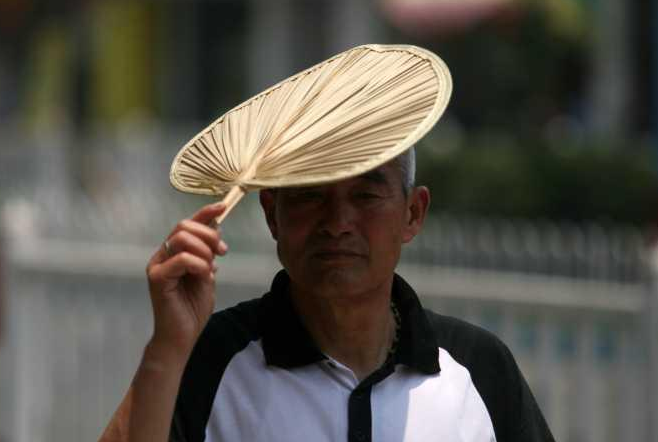
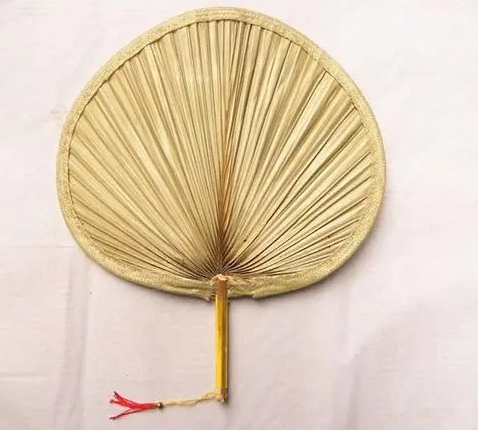
What is the best way to use a hand fan?
The Do’s and DON’Ts:
How to make a bamboo hand fan?
Traditionally, Chinese folding fans were made by hand using bamboo or wood for the frame, and paper or silk for the folds.
The process of making a traditional folding fan typically involved several steps.
First, the frame of the fan would be made by cutting and shaping bamboo or wood into the desired shape.
Next, the paper or silk would be glued to the frame to create the folds.
Finally, the fan would be painted or decorated with intricate designs, often using a brush and ink.
Today, most of the Folding fans are mass produced, which uses plastic or metal for the frames and silk or other artificial materials for the coverings, a variety of method is applied for the designs such as digital printing, applique and more.
Video instruction is down below:👇
What are the best bamboo hand fans to buy?
I carefully selected these best bamboo hand fans to buy for you to style up your space and spice up your life.
Frequently Asked Questions:FAQ
Reading FAQs is like solving a mystery! It’s a fun way to discover new information and answers to questions you never knew you had.
Let’s dive into it!
Which country uses hand fans?
- Japan: Hand fans, called “sensu” or “uchiwa,” have been used in Japan for centuries and are a traditional part of Japanese culture. They were used by both men and women, and were often made from bamboo or paper.
- Spain: Spanish fans, known as “abanicos,” have been used for centuries as a way to cool oneself off in the hot Spanish climate. They were also used as a fashion accessory and were often decorated with elaborate designs.
- China: Chinese hand fans, known as “shan,” have been used for thousands of years. They were traditionally made from bamboo and silk, and were used as both a functional and decorative item.
- Korea: Korean traditional hand fan, known as “bukkeon,” are made of paper, silk or feather, it is used for both cooling and dancing performance.
- Italy : Italian hand fans, known as “ventaglio,” were used by both men and women in the past and decorated with elaborate designs, it was also an indication of social status.
What is the difference between Chinese and Japanese hand fan?
- Material: Chinese hand fans are traditionally made from bamboo or wood, while Japanese hand fans are made from paper or cloth.
- Design: Chinese hand fans often feature intricate designs and symbols that hold traditional meaning, while Japanese hand fans often feature simpler designs such as a single flower or inscription.
- Use: Chinese hand fans are used both for practical and decorative purposes, while Japanese hand fans are mainly used for practical purposes, such as keeping cool, or for ceremonial purposes, such as in religious ceremonies.
- Size: Chinese hand fans are larger in size than Japanese hand fans, which are typically smaller in size and easier to carry around.
- Cultural significance: Both Chinese and Japanese hand fans hold cultural significance, but in different ways, for example in Japan, it is a traditional item for men and women, while in China it’s also a symbol of elegance and refinement.
What are Chinese hand fans called?
The folding one is called 折扇(Zhe Shan) and the round one or rigid one is called 团扇(Tuan Shan).
The feather one is called 羽毛扇 (Yu Maoshan) and the Bulrush one is called 蒲扇 (Pu Shan).
